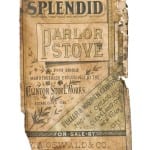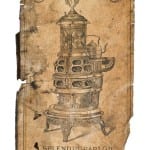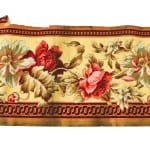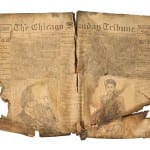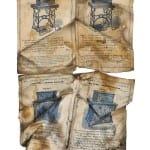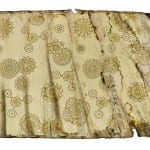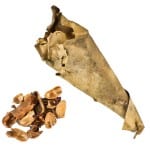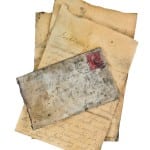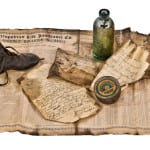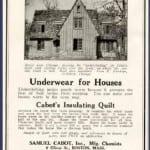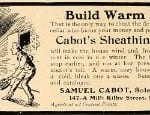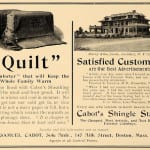wall cavity "insulation" greatly assists in identifying age of 19th century chicago cottages
This entry was posted on April 20 2016 by Eric
among the more interesting surprises an old house can hold, insulation is sometimes unearthed during demolition in the form of dated ephemera and materials from a bygone era. the contents found are especially valuable in providing a sturdy timeline during which the house was constructed, especially if found resting on sill plates-- indicating that it was the first material tossed into the structure, much like artifacts at the bottom of a privy pit.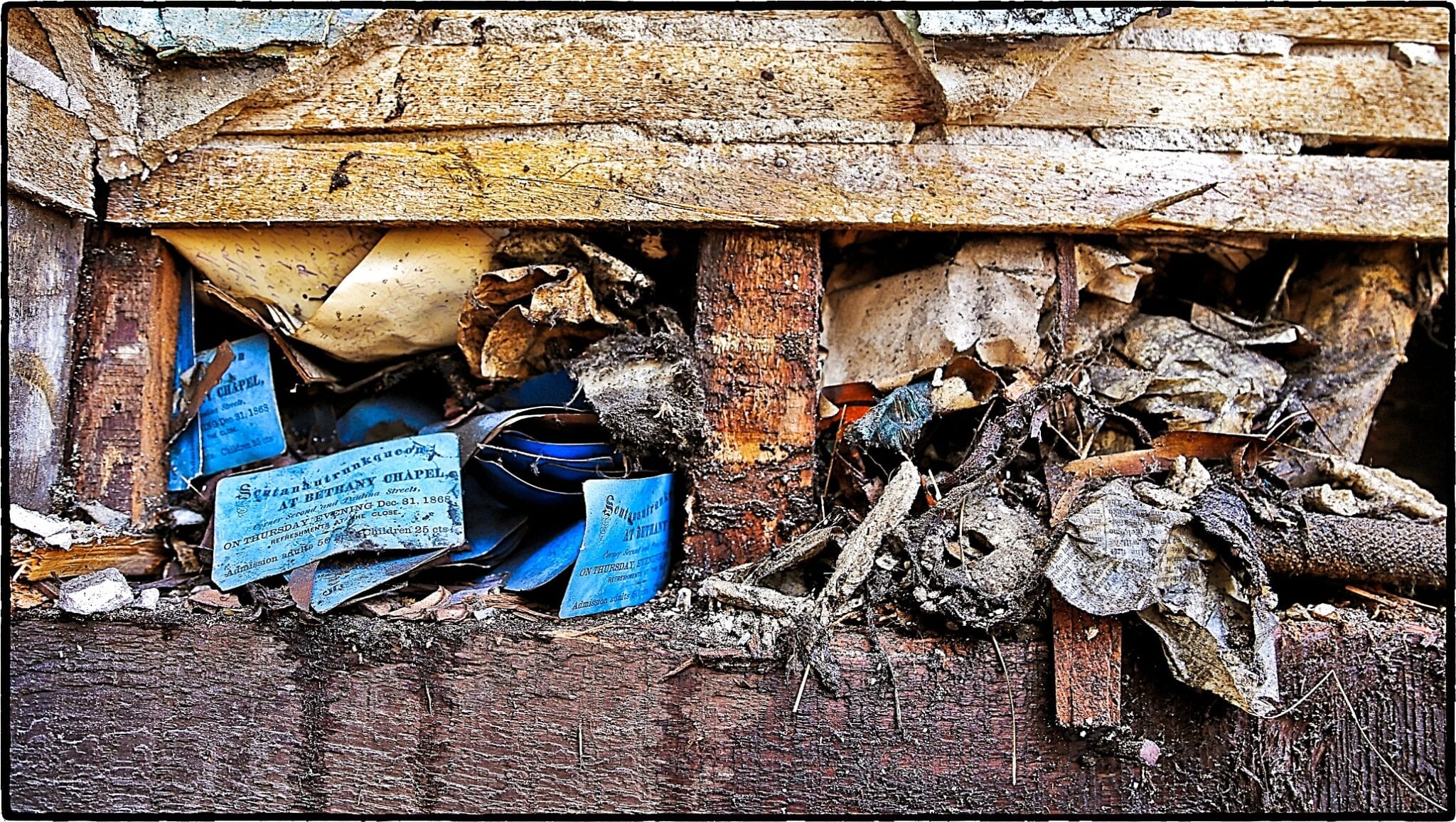
formally, insulation was rarely used in houses built prior to 1940, however, the last decade of the nineteenth century saw an early manufacturing industry initiated around home insulation. products made for central heating (and sometimes soundproofing) were general solutions, and were too minimal to be fully developed; the impetus for developing better insulation likely had greater import in its industrial application toward protecting pipes, boilers, and steam powered equipment.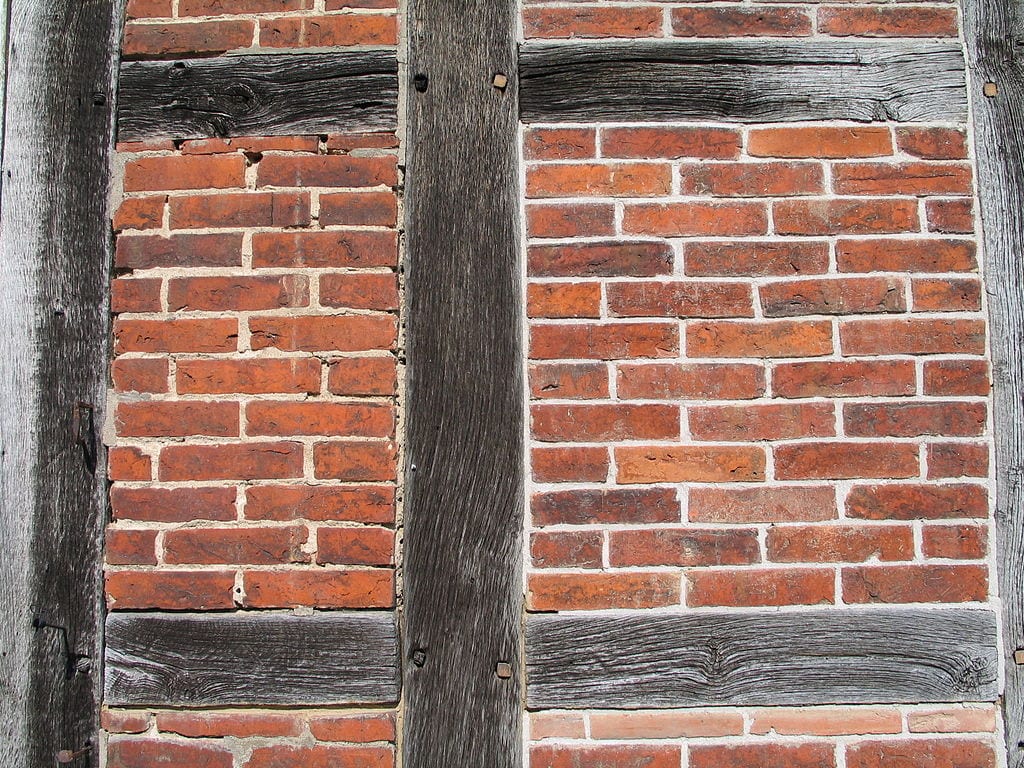
the most "primitive" insulations in residences often included cork, wood shavings, newspaper and cinders-- all ostensibly compiled on-site and poured into wall cavities. this mixture of refuse sometimes included straw, sawdust, corncobs, or dried seaweed. more elaborate house constructions incorporated insulation into the structure, such as with brick nogging, when wood frame houses were lined with brick between studs, and covered with plaster. among the artifacts urban remains has uncovered insulating wood frame homes have been newspapers (sometimes heavily illustrated), books, wallpaper, fabric, personal letters, and an occasional bottle.
some of the first materials used as marketable insulation were eel grass, mineral wool, and cellulose fiber. eel grass was a natural substance, first used by settlers in the north atlantic who would collect the grass-like plant on beaches, dry it out and sandwich the plant material between rolls of heavy kraft paper, then machine-stitched into standard sized "cabot's quilt". this plant-derived product was patented in 1893, and in practice was bought and used as a sound deadener in hotels, hospitals, and radio stations. advertisement's referred to cabot's quilt as "underwear for houses" and was in production until the late 1930's.
mineral wool refers to various products comprised of "spun" synthetic fiber, and at the turn of the century these were mainly slag wool and rock wool. the former was made by blowing steam through blast furnace scoria (residue from the manufacture of pig iron) to create a fine, flexible fuzz of entangled fibers. the latter was made by similarly applying steam to molten naturally-occurring rocks. this material was made as early as 1875 and is still used today (sold either as loose fill or matted with a binder into bats and blankets). loose fill was suitable for hand-pouring or machine blowing into exposed ceilings, wall cavities and between floor joists.
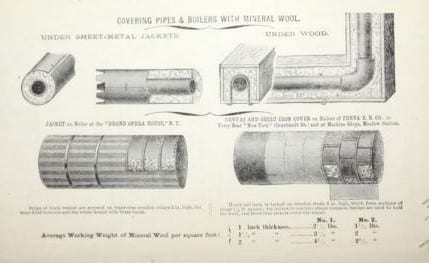
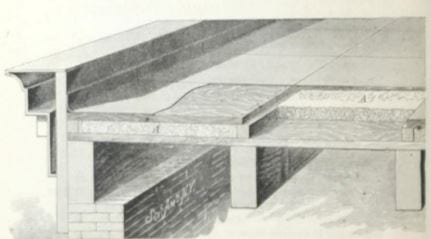
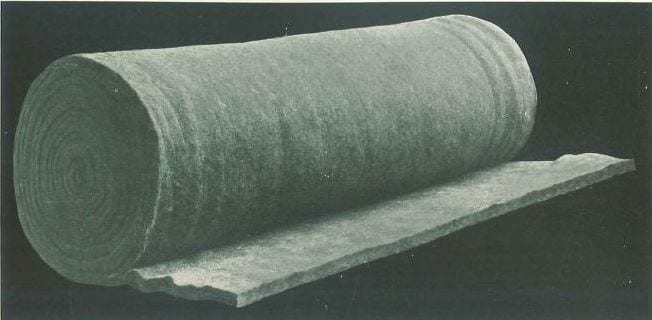
early on in the twentieth century, manufacturers also used byproducts from wood and woody plants to make cellulose fiber. "insulite" appeared around 1912, the wood fiber and binder pressed into 1/2" thick sheets which could even be used as exterior sheathing, interior wallboard or as a base for plaster. similar products existed, such as cane board (made from sugarcane), insoboard (made from wheat straw), and maftex (made from licorice roots).

the teens and twenties saw more insulators developed based on inorganic material, including several products made from gypsum. insulex, for one, used "an aerated or cellular gypsum" that was a dry product which would expand to a larger volume when mixed with water; it could be used as lightweight fill for leveling floors and roofs.

after 1940 more recognizable or modern forms of insulation were developed, including expanding foams (made of resin, hardener, and compressed air), gas wool, perlite and vermiculite, and insulators based on plastics.
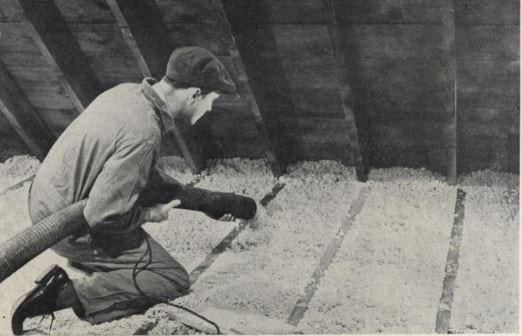
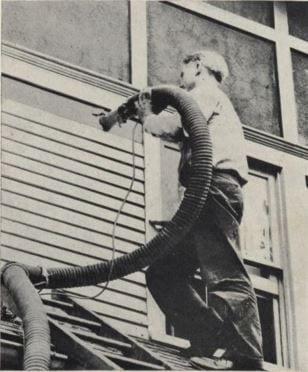
composition aside, insulation of the sort found in a pre-fire cottage late last year (i.e. the first artifacts pictured), compose an informative snapshot of life in the nineteenth century and assist greatly in pinpointing a date of construction. when documented as individual objects, these left-behinds of the occupants or builders, can become not just useful but visually compelling--an unofficial time capsule, hidden right in the lining of the building.
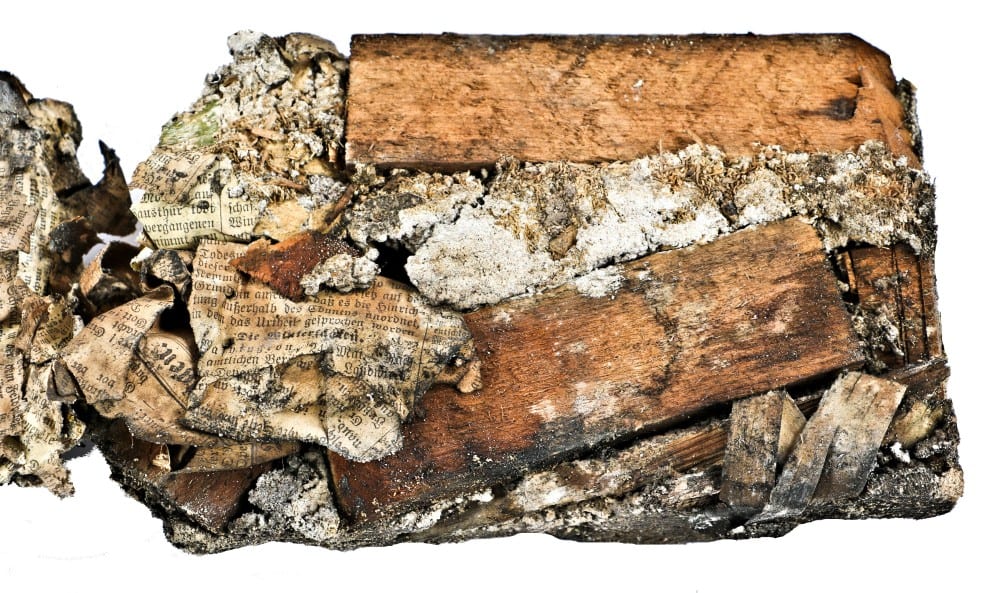
This entry was posted in , Miscellaneous, Salvages, Bldg. 51, New Products, Events & Announcements, New Acquisitions, Featured Posts & Bldg. 51 Feed on April 20 2016 by Eric
WORDLWIDE SHIPPING
If required, please contact an Urban Remains sales associate.
NEW PRODUCTS DAILY
Check back daily as we are constantly adding new products.
PREMIUM SUPPORT
We're here to help answer any question. Contact us anytime!
SALES & PROMOTIONS
Join our newsletter to get the latest information

